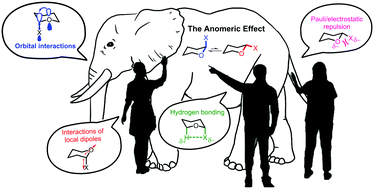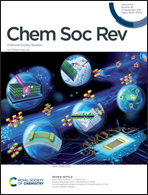Anomeric effect, hyperconjugation and electrostatics: lessons from complexity in a classic stereoelectronic phenomenon
Abstract
Understanding the interplay of multiple components (steric, electrostatic, stereoelectronic, dispersive, etc.) that define the overall energy, structure, and reactivity of organic molecules can be a daunting task. The task becomes even more difficult when multiple approaches based on different physical premises disagree in their analysis of a multicomponent molecular system. Herein, we will use a classic conformational “oddity”, the anomeric effect, to discuss the value of identifying the key contributors to reactivity that can guide chemical predictions. After providing the background related to the relevant types of hyperconjugation and a brief historic outline of the origins of the anomeric effect, we outline variations of its patterns and provide illustrative examples for the role of the anomeric effect in structure, stability, and spectroscopic properties. We show that the complete hyperconjugative model remains superior in explaining the interplay between structure and reactivity. We will use recent controversies regarding the origin of the anomeric effect to start a deeper discussion relevant to any electronic effect. Why are such questions inherently controversial? How to describe a complex quantum system using a model that is “as simple as possible, but no simpler”? What is a fair test for such a model? Perhaps, instead of asking “who is right and who is wrong?” one should ask “why do we disagree?”. Stereoelectronic thinking can reconcile quantum complexity with chemical intuition and build the conceptual bridge between structure and reactivity. Even when many factors contribute to the observed structural and conformational trends, electron delocalization is a dominating force when the electronic demand is high (i.e., bonds are breaking as molecules distort from their equilibrium geometries). In these situations, the role of orbital interactions increases to the extent where they can define reactivity. For example, negative hyperconjugation can unleash the “underutilized” stereoelectronic power of unshared electrons (i.e., the lone pairs) to stabilize a developing positive charge at an anomeric carbon. This analysis paves the way for the broader discussion of the omnipresent importance of negative hyperconjugation in oxygen-containing functional groups. From that point of view, the stereoelectronic component of the anomeric effect plays a unique role in guiding reaction design.



 Please wait while we load your content...
Please wait while we load your content...